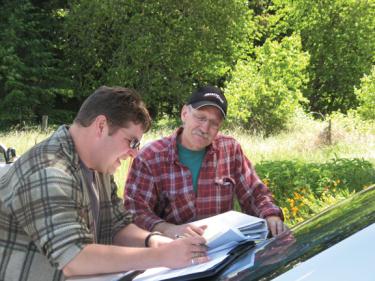Planning Your Harvest
Planning is important throughout the timber sale process. Whether you’re writing out your forest management plan or strategizing how to attract and select buyers, planning keeps you prepared for and focused on the future of your forest.
The harvest itself takes some planning too. You and your forester can choose how and where the loggers will cut in order to balance all your forest management goals and priorities with the requirements of a successful timber harvest.
For a good plan, you’ll need to consider:
- Why you’re harvesting. Talk to your forester about your priorities and goals for the harvest—that means income, visual appeal, wildlife habitat, controlling invasives, or improving tree health. Knowing your objectives will help your forester choose the right trees and sites for the harvest, as well as the harvest’s constraints or conditions.
- Where you’re cutting. Different harvesting techniques and equipment are available to you and the buyer you’ve chosen, depending on how steep or rough your terrain is, or if there’s considerable debris and damage on your property (if this is a salvage harvest). Your harvest plan should factor in your terrain and its limitations.
- What you’re cutting. Trees of different sizes require different kinds of equipment and may affect how loggers cut and move through your woods. Your plan should reflect this.
- How you’ll get there. Getting to and moving around your harvest site can erode and damage your soil, contribute sediment to any rivers or streams on your property, and affect the health of your forest down the line. To limit erosion and soil impact, your harvest plan should specify what roads and trails are to be used.
- What you’re doing afterwards. Don’t leave post-harvest operations out of your plan. You’ll want a clearly laid-out schedule for disposing of slash and other post-harvest debris, controlling or repairing soil erosion if any has occurred, and any replanting or regeneration efforts you’d like to implement in your woods.
The time you invest in planning your timber sale and harvest is time well-spent. It will make for greater income, healthier woods and more peace of mind as you go through the actual sale process. The next page has outlines best practices for managing a timber sale to ensure that your financial interests and your woods are protected.
How can I get more tips?
It’s simple! Enter your email below.

